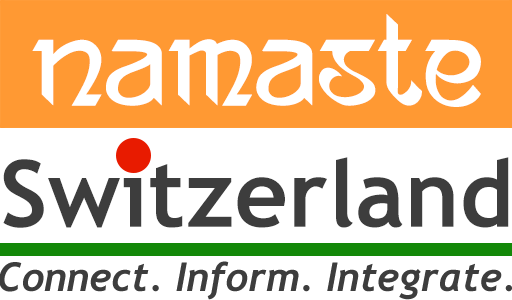On November 9th, Infosys Science Foundation, Bengaluru, announced the winners of the Infosys Prize 2019. Among them was an applied mathematician, Dr. Siddhartha Mishra, a professor at ETH, Zurich. Earlier this year he received the ICIAM Collatz Prize, an international award that recognizes scientists under 42 years of age for their outstanding work on industrial and applied mathematics. With an international award from his mathematics community and a prestigious Indian award, we wonder, how did it all start? Gayatri Muthukrishnan tells us more.

Early days and Education
Dr. Mishra grew up and completed his undergraduate studies from Bhubaneswar, Odisha. Having obtained his basic education, he moved to the prestigious IISc and TIFR combined mathematics program in Bangalore (with a year in France) for Masters and Ph.D. Here, his eyes were opened to the complex world of mathematics at a place he describes as “state-of-the-art institute comparable to the top academic institutions in the US and Europe”. He later worked in Oslo, Norway before moving to ETH, Zürich. Having been part of educational establishments in multiple countries, he says there is an “enormous gulf” in the undergraduate education in India compared to the good institutions abroad. According to Dr. Mishra, the mathematics taught at undergraduate level is basic and rudimentary in India while at ETH the level of exposure at the same level is much higher. While IITs, IISc and IISERs are now providing valuable basic science undergraduate courses, they still, for example, do not emphasize on applied or computational mathematics which should be an integral part of education in current times.
Complex world of Mathematics
Staring out of the window, he sees flow. Be it the clouds moving, smoke rising from chimneys, water breaking over rocks. Treading the line between physics and mathematics, he ponders on “what is this flow?”. In the 1700s, Leonhard Euler, a Swiss mathematician, wrote down equations to describe this for the first time. These complex set of partial differential equations (PDEs) which along with the large amount of data available today becomes a hard problem to solve on paper. Dr. Mishra’s work comes in here – “Given a complex system described by a system of non-linear PDEs, I design efficient algorithms that approximate the system to high accuracy, so that you can predict the weather, a tsunami or design an aircraft.” And in what might be the coolest application of his work, he has contributed algorithms that predict movement of clouds, dynamics of stars, are used in the development of aircrafts, predict tsunamis and avalanches.
Geophysicists, astrophysicists, aircraft designers and even biologists may come to him with a problem involving fluids, and his team in turn designs the algorithm and gives it back it to them. After the algorithm is approved, they (Dr. Mishra or the collaborator) scale up the system and package it into a readily usable software. The biggest challenge he says is “…the problems are very difficult. But it is an intellectual challenge, not a logistic challenge. It is hard to get the right idea unlike building something that is limited by technological development…”
Seeing the Mathematics in Action
Dr. Mishra’s group has contributed to a software that is being used to forecast tsunamis in the Mediterranean. A new state-of-art climate model being developed in CalTech uses his cloud prediction algorithm. Closer to home, the Swiss Institute of Snow Research, leaders in avalanche prediction, requested his expertise in developing a model to predict rockslides and snow avalanches. The extra motivation to work on this subject was the fact that one of the big users for their work is the Indian Army. The roads joining Leh to Srinagar and Leh to Manali are prone to blockages due to avalanches. Predicting these avalanches accurately becomes important for the army to be prepared for action.
With all this extraordinary work under his belt, he has deservedly been the recipient of multiple awards. He graciously acknowledges, “It is a real honor to win an award from my country and have applied mathematics recognized. The previous awardees have all been exemplary and I am privileged to be amongst them.” There are many firsts with the Infosys award: the first time an applied mathematician and the first time someone from Odisha is receiving this honour.
Motivation and goals
 “While the applications are extremely exciting,” Dr. Mishra says, “what drives me, is to understand complex systems and simulate them”. While Euler defined the fluid systems 300 years ago, these problems have many scales, non-linearity and diversity. Dr. Mishra humbly acknowledges that “he is trying to understand it, has but achieved partial success and has a long way to go before understanding it fully”. What is lacking and what Dr. Mishra brings in, is improving the efficiency and accuracy of the predictions.
“While the applications are extremely exciting,” Dr. Mishra says, “what drives me, is to understand complex systems and simulate them”. While Euler defined the fluid systems 300 years ago, these problems have many scales, non-linearity and diversity. Dr. Mishra humbly acknowledges that “he is trying to understand it, has but achieved partial success and has a long way to go before understanding it fully”. What is lacking and what Dr. Mishra brings in, is improving the efficiency and accuracy of the predictions.
Currently, with the large amounts of data generated due to availability of better sensors, the predictions can be made with extremely high accuracy only if the right algorithms are used. Another problem is that the programs are energy guzzlers since they take long hours to run on expensive super computers like the one based in Lugano. Currently only big organizations that can afford to access these systems can run these simulations. Looking to the future, the goal is to improve accuracy by incorporating large data sets and at the same time simplifying algorithms. Dr Mishra envisions an age when these algorithms and predictions can be run on a mobile device. In his words, “That is very ambitious but that is how it should be”.
When asked about his role models or mentors, Dr. Mishra said he is extremely grateful to teachers in his school and in Bangalore, and Ph.D. and post-doctoral advisors for guiding him in his mathematical journey. He specially mentions, Dr. Eitan Tadmor from USA, who has been a mentor, guide and role model, with whom he has had a close association for the last 15 years.
Life in Switzerland
Dr. Mishra finds Switzerland “a stable and welcoming society but a sedate society”. What he misses here is the vibrancy of the Indian life and, well, the food options, specifically, South Indian food.
His message to ‘Namaste Switzerland’ readers regarding education is, “Switzerland has a very good education system. When it comes to university education, Swiss Universities are excellent. ETH is one of the top 5 Universities in the world, on par with MIT and CalTech and it is free. So, there is no reason for one to send their children elsewhere. In Swiss culture, it is important to let children do what they want – they are given more choice and freedom. Unlike in India where the focus is on getting a job, just as in Switzerland, you should allow the children to have the choices in education that the country has to offer. Education in Switzerland is of high quality and children should do what they want..”.
Disclaimer: Written in good faith, we do not undertake any financial/reputational impact or other obligations/liabilities that may arise from the content.












